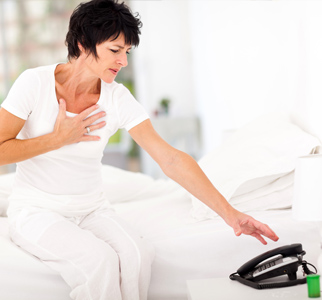Healthy Living
Women, Listen Up: New Warnings About Heart Attack Symptoms
December 2019
For years, health experts have warned that women more often have atypical heart attack symptoms. Chest pain or discomfort signal a heart attack in anyone. But other signs—such as neck or back pain, breathlessness, and indigestion—have been thought to strike more women than men.
Now, a shift in the way doctors diagnose heart attacks, and a different way of studying them, has raised questions about this theory. A new study suggests women are just as likely as men to have pain in their chest and left arm during a heart attack. Men, meanwhile, have a higher chance of having atypical symptoms.
A new view of sex differences
For the study, scientists talked with 1,941 emergency-department patients suspected of having a heart attack. They asked patients directly about their symptoms. Past studies often used secondhand information from doctors or medical records.
Then the researchers checked blood levels for a marker called troponin, which is released from the damaged heart muscle. Doctors once used a single troponin threshold for everyone. But they’ve adjusted their approach and now use sex-specific troponin levels to help diagnose heart attacks.
With these tweaks to the method, the results defied conventional wisdom. The chance of having chest pain with a heart attack was the same for men and women—about 9 in 10. Meanwhile, atypical symptoms occurred in about 2 in 5 men and 1 in 5 women.
With knowledge comes power
Heart disease is the number one killer of men and women. But right now, women are more likely to die from heart attacks then men. A more complete understanding of women’s symptoms could help healthcare providers better treat them.
No matter your gender, any symptoms of heart attack should be taken seriously. If you notice these signs in you or in someone else, call 911 right away:
-
Chest pain or discomfort
-
Pain in the jaw, neck, or back
-
Feeling light-headed, faint, or weak
-
Arm or shoulder pain
-
Shortness of breath
Treatment to restore blood flow to the heart works best within the first hour. Swift help can mean the difference between life and death.
Featured in


